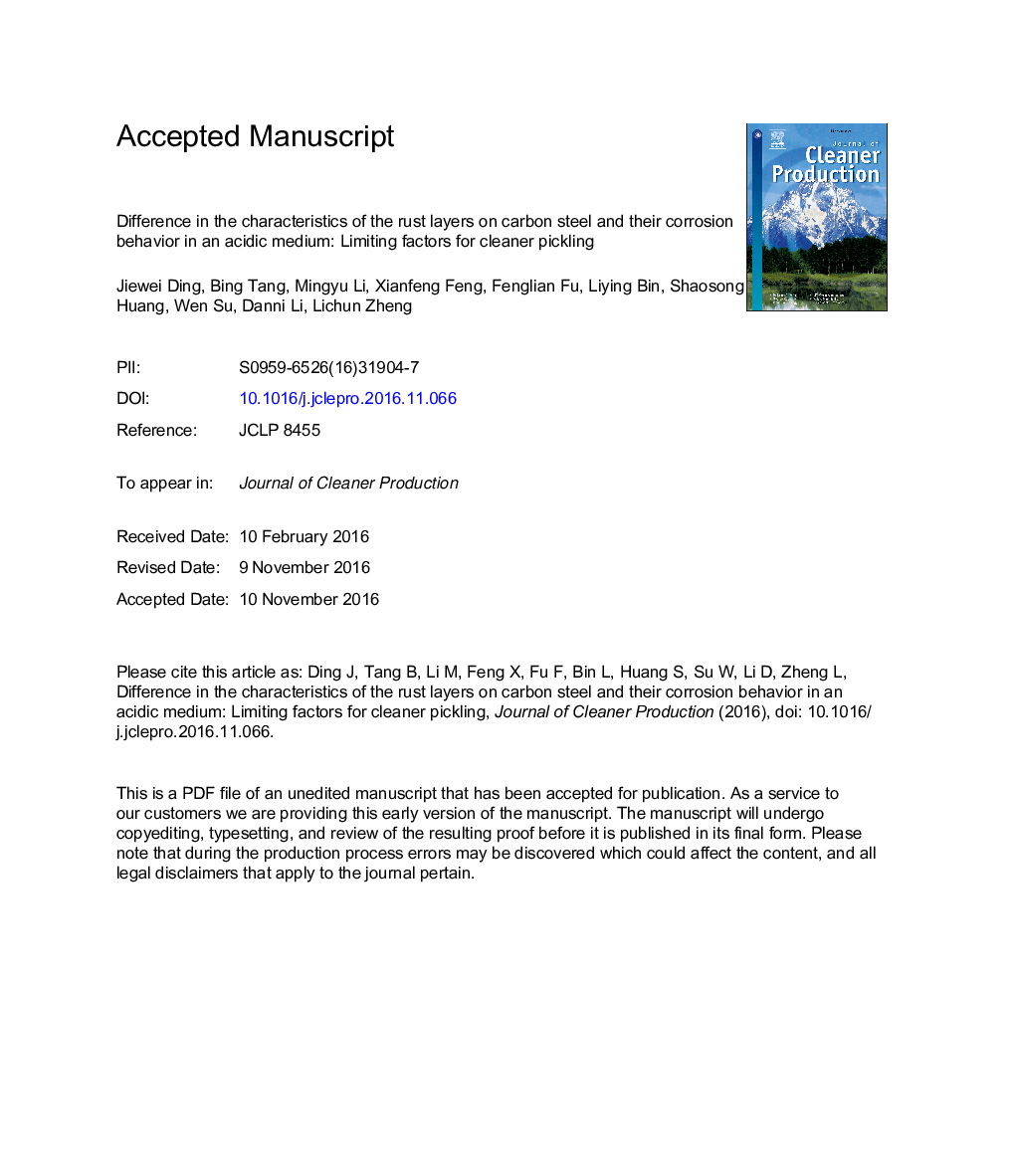| Article ID | Journal | Published Year | Pages | File Type |
|---|---|---|---|---|
| 5480387 | Journal of Cleaner Production | 2017 | 40 Pages |
Abstract
This work aims at revealing the key factors that limit the cleaner production level of a pickling process. By comparing the difference in their characteristics and the corrosion behaviors in an acidic medium, three kinds of sample, including the matrix steel (AS), the naturally-corroded carbon steel (NR) and the carbon steel treated under high temperature oxidation (OR), after immersed in the experimental solutions with or without hexamethylenetetramine (HA), were characterized with the methods, such as, electrochemical polarization, X-ray diffraction (XRD) and scanning electron microscopy (SEM). Results indicated, no matter which kind of rust layers, the adsorption of HA on their surface all accorded with the same adsorption isotherm. Although the rust layers did not change the adsorption pattern of HA directly, but their steric effect would influence the adsorption potential of HA; the forming process of rust layers (under different environmental conditions) heavily influenced their composition, structure, and the interface roughness between the rust layer and the metal matrix, and also influenced the corrosion behavior of samples in an acidic medium, which were the key factors that limited the cleaner production level of a pickling process. These results indicated that an object-oriented pickling strategy should be adopted for a practical pickling process.
Related Topics
Physical Sciences and Engineering
Energy
Renewable Energy, Sustainability and the Environment
Authors
Jiewei Ding, Bing Tang, Mingyu Li, Xianfeng Feng, Fenglian Fu, Liying Bin, Shaosong Huang, Wen Su, Danni Li, Lichun Zheng,
